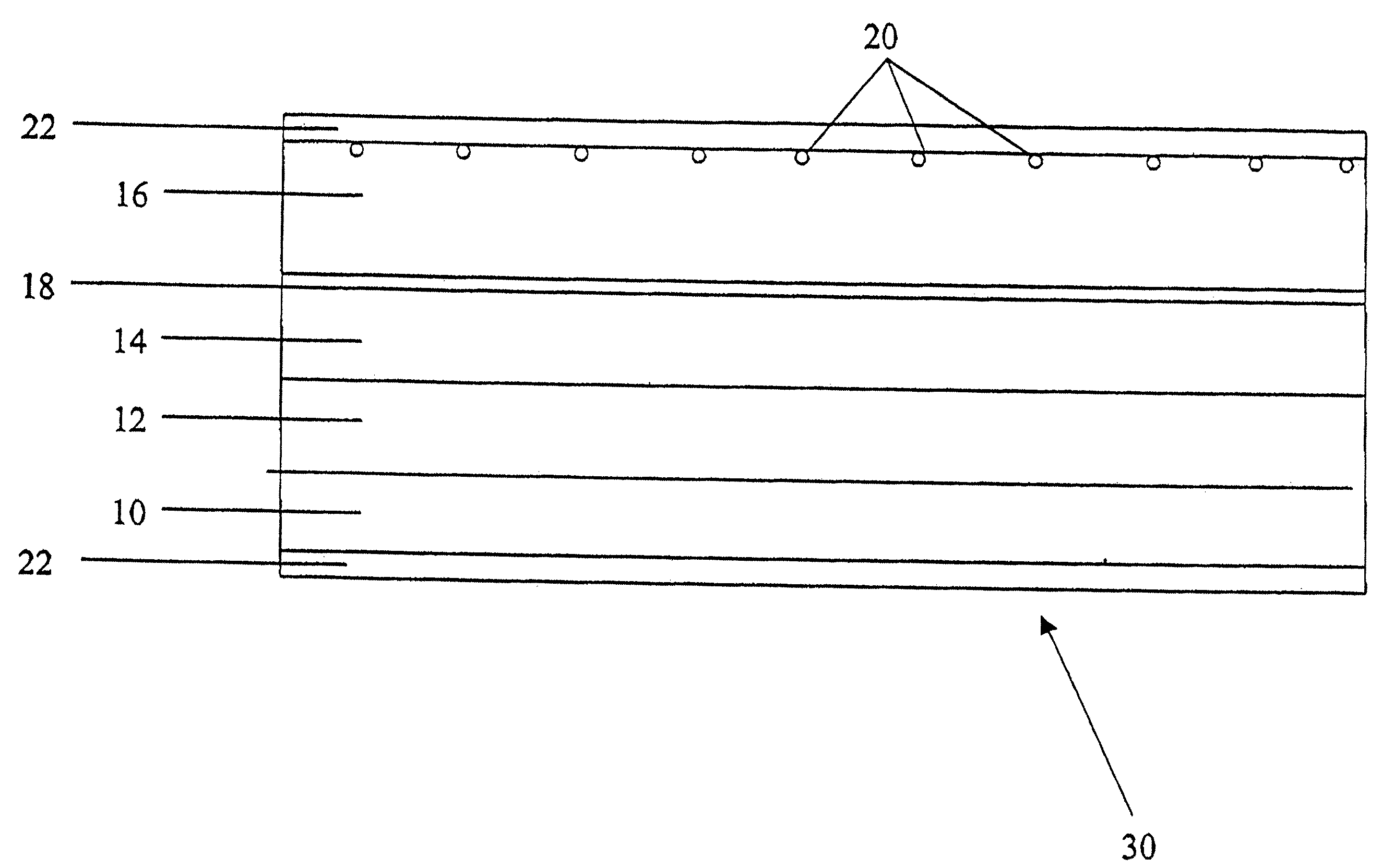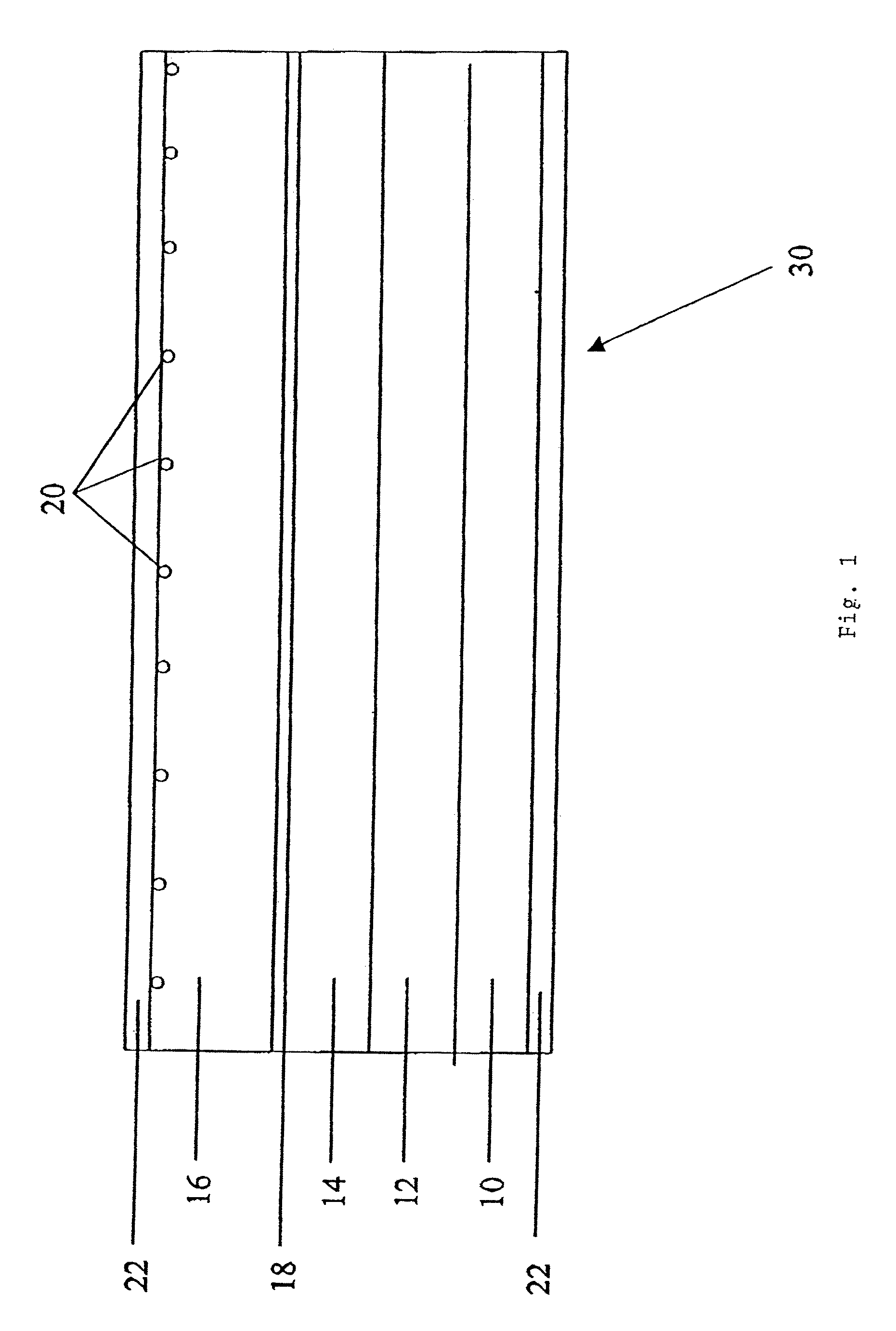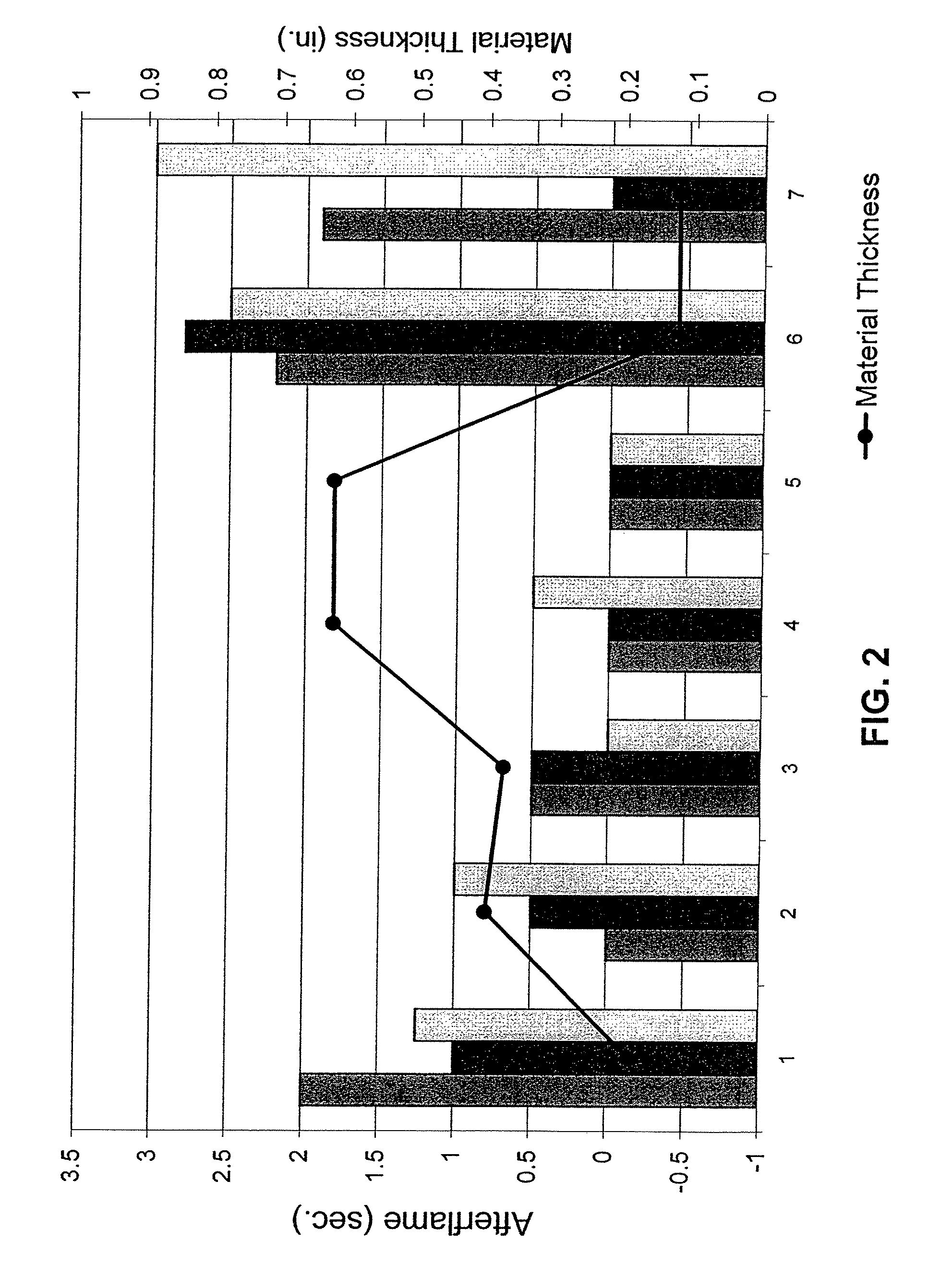Thermal and acoustic insulation fabric
a technology of thermal insulation fabric and fabric, which is applied in the field of nonwoven fabrics, can solve the problems of accelerated corrosion of the skin of the aircraft, difficult processing of textile equipment, and irritation of the touch of fibers such as fiberglass, and achieve the effects of improving the fuel efficiency and payload capacity of the aircraft, soft and non-abrasiv
- Summary
- Abstract
- Description
- Claims
- Application Information
AI Technical Summary
Benefits of technology
Problems solved by technology
Method used
Image
Examples
example 1
[0050]A first nonwoven felt batt is produced from fiber blend A having a mass per unit area of from 11.0 to 12.0 oz / yd2. A second nonwoven felt batt is produced from fiber blend E having a weight of from 11.0 to 12.0 oz / yd2. The felt batts are then placed in intimate contact and mechanically needle punched according to methods well known by those skilled in the art to a needled weight of from 20.5 to 23.5 oz / yd2 and a needled thickness of from 0.575 to 0.725 inches.
[0051]A fluoropolymer treatment is then applied to the needled fabric as a means of imparting water repellency to the fabric. The treatment consists of 2.5% by volume Zonyl® RN, available from E.I. DuPont, and 97.5% by volume water. Wet pickup is 100% based on the weight of the fabric. The treated fabric is then oven dried and cured at 450 to 475 degrees Fahrenheit. The weight of the treated fabric is from 17.5 to 21.5 oz / yd2, and the thickness is from 0.500 to 0.650 inches. It may be noted that the fabric loses weight du...
example 2
[0053]A first nonwoven felt batt is produced from fiber blend A having a mass per unit area of from 10.5 to 11.5 oz / yd2. A second nonwoven felt batt is produced from fiber blend E having a weight of from 10.5 to 11.5 oz / yd2. The felt batts are then placed in intimate contact and mechanically needle punched according to methods well known by those skilled in the art to a needled weight of from 20.5 to 23.5 oz / yd2 and a needled thickness of from 0.575 to 0.725 inches.
[0054]A fluoropolymer treatment is applied as in Example 1. The finished weight of the treated fabric is from 17.5 to 21.5 oz / yd2, and the finished thickness is from 0.500 to 0.650 inches.
example 3
[0055]A first nonwoven felt batt is produced from fiber blend B having a mass per unit area of from 11.6 to 12.8 oz / yd2. A second and a third batt are also produced having the same construction as said first batt. A fourth nonwoven felt batt is produced from fiber blend I having a weight of from 7.0 to 8.2 oz / yd2. The three felt batts produced from fiber blend B are then placed in intimate contact with the fourth felt batt produced from fiber blend I positioned against the outermost face of the three stacked batts of blend B. The four batts are then mechanically needle punched according to methods well known by those skilled in the art to a needled weight of from 40.6 to 44.0 oz / yd2 and a needled thickness of from 1.125 to 1.500 inches.
[0056]A fluoropolymer treatment is applied as in Example 1. The finished weight of the treated fabric is from 35.1 to 42.9 oz / yd2, and the finished thickness is from 1.120 to 1.380 inches.
PUM
| Property | Measurement | Unit |
|---|---|---|
| thickness | aaaaa | aaaaa |
| thickness | aaaaa | aaaaa |
| thickness | aaaaa | aaaaa |
Abstract
Description
Claims
Application Information
 Login to View More
Login to View More - R&D
- Intellectual Property
- Life Sciences
- Materials
- Tech Scout
- Unparalleled Data Quality
- Higher Quality Content
- 60% Fewer Hallucinations
Browse by: Latest US Patents, China's latest patents, Technical Efficacy Thesaurus, Application Domain, Technology Topic, Popular Technical Reports.
© 2025 PatSnap. All rights reserved.Legal|Privacy policy|Modern Slavery Act Transparency Statement|Sitemap|About US| Contact US: help@patsnap.com



